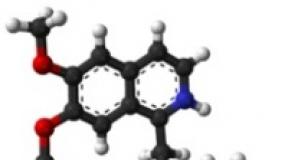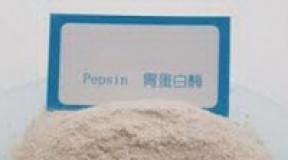Remantadine: instructions for use. Remantadine tablets: instructions for use for adults and children, prices and reviews Remantadin tablets instructions for use
In this article, you can read the instructions for use medicinal product Remantadine... Reviews of website visitors - consumers of this medicine, as well as opinions of doctors of specialists on the use of Remantadine in their practice are presented. A big request to more actively add your reviews about the drug: did the medicine help or did not help get rid of the disease, what complications and side effects were observed that may not have been declared by the manufacturer in the annotation. Analogues of Remantadine in the presence of available structural analogs. Use for the treatment and prevention of influenza in adults, children, as well as during pregnancy and lactation.
Remantadine - an antiviral agent derived from adamantane. The main mechanism of antiviral action is inhibition of the early stage of specific reproduction after the penetration of the virus into the cell and before the initial transcription of RNA. Pharmacological effectiveness is ensured by inhibiting the reproduction of the virus at the initial stage of the infectious process.
It is active against various strains of influenza A virus (especially type A2), as well as tick-borne encephalitis viruses (Central European and Russian spring-summer), which belong to the group of arboviruses of the Flaviviridae family.
Structure
Rimantadine hydrochloride + excipients.
Pharmacokinetics
After oral administration, it is slowly, almost completely absorbed in the intestine. The concentration in the nasal secretion is 50% higher than the plasma concentration. Metabolized in the liver. It is excreted by the kidneys (15% - unchanged, 20% - in the form of hydroxyl metabolites).
Indications
- prevention and early treatment of influenza in adults and children over 7 years old;
- prevention of influenza during epidemics in adults;
- prevention of tick-borne encephalitis of viral etiology.
Release forms
Tablets 50 mg.
Others dosage forms the drug, including syrup or capsules, does not exist, it is possible that these drugs are fakes.
Instructions for use and dosage
Inside, after eating, on the 1st day - 100 mg 3 times (or 300 mg once), on the 2nd and 3rd days - 100 mg 2 times, on the 4th day - 100 mg 1 time; children from 7 to 10 years old - 50 mg 2 times a day, from 11 to 14 years old - 3 times a day. The course is 5 days.
As a prophylactic agent - 50 mg once a day for 10-15 days.
After a bite of an encephalitis tick - 100 mg 2 times a day for the next 72 hours.
Side effect
- epigastric pain;
- flatulence;
- increased levels of bilirubin in the blood;
- dry mouth;
- anorexia;
- nausea, vomiting;
- headache;
- insomnia;
- nervousness;
- dizziness;
- violation of concentration of attention;
- drowsiness;
- anxiety;
- increased excitability;
- fatigue;
- allergic reactions.
Contraindications
- acute diseases liver;
- acute and chronic kidney disease;
- thyrotoxicosis;
- pregnancy;
- children under 7 years of age;
- hypersensitivity to rimantadine (active ingredient of the drug Remantadine).
Application during pregnancy and lactation
Contraindicated in pregnancy.
special instructions
Rimantadine is used with caution in arterial hypertension, epilepsy (including history), cerebral atherosclerosis.
When using rimantadine, exacerbation of chronic concomitant diseases is possible. In elderly patients with arterial hypertension the risk of developing hemorrhagic stroke increases. With indications of a history of epilepsy and ongoing anticonvulsant therapy, with the use of rimantadine, the risk of developing an epileptic seizure increases. In such cases, rimantadine is used at a dose of up to 100 mg per day simultaneously with anticonvulsant therapy.
In influenza caused by the B virus, Remantadine has an antitoxic effect.
Prophylactic reception is effective in contact with sick people, with the spread of infection in closed groups and with a high risk of illness during an influenza epidemic. The emergence of drug-resistant viruses is possible.
Drug interactions
With the simultaneous use of rimantadine reduces the effectiveness of antiepileptic drugs.
Adsorbents, astringents and coating agents reduce the absorption of Remantadine.
Means that acidify urine (ammonium chloride, ascorbic acid) reduce the effectiveness of rimantadine (due to increased renal excretion).
Means that alkalinize urine (acetazolamide, sodium bicarbonate) increase its effectiveness (decrease in renal excretion).
Cimetidine reduces the clearance of rimantadine by 18%.
Analogues of the drug Remantadin
Structural analogues active substance (also added drugs of a similar antiviral orientation):
- Algirem;
- Amiksin (similar effect);
- Arbidol (similar effect);
- Ingavirin (similar effect);
- Kagocel (similar effect);
- Orvirem;
- Rimantadine;
- Rimantadine Aktitab;
- Rimantadin-STI;
- Rimantadine hydrochloride.
In the absence of analogues of the drug for the active substance, you can follow the links below to the diseases for which the corresponding drug helps, and see the available analogues for the therapeutic effect.
Composition and release form of the drug
10 pieces. - contour cell packaging (1) - cardboard packs.
10 pieces. - contour cell packages (2) - cardboard packs.
20 pcs. - dark glass jars (1) - cardboard packs.
pharmachologic effect
Adsorbents, astringents and coating agents reduce the absorption of rimantadine.
Means that acidify urine (ammonium chloride, ascorbic acid) reduce the effectiveness of rimantadine (due to increased renal excretion).
Urine alkalizing agents (acetazolamide) enhance its effectiveness (reducing renal excretion).
Paracetamol and acetylsalicylic acid reduce the C max of rimantadine by 11%.
Cimetidine reduces the clearance of rimantadine by 18%.
special instructions
Rimantadine is used with caution in arterial hypertension, epilepsy (including history), cerebral atherosclerosis.
When using rimantadine, exacerbation of chronic concomitant diseases is possible. Elderly patients with arterial hypertension increase the risk of developing hemorrhagic stroke. With indications of a history of epilepsy and ongoing anticonvulsant therapy, with the use of rimantadine, the risk of developing an epileptic seizure increases. In such cases, rimantadine is used at a dose of up to 100 mg / day concurrently with anticonvulsant therapy.
Rimantadin is antiviral druginhibiting replication of viruses on early stages diseases - effective against influenza of groups A and B, can be used for prophylaxis.
Antiviral agent derived from adamantane. Effective against various strains of influenza A virus, Herpes simplex type I and II viruses, tick-borne encephalitis viruses (Central European and Russian spring-summer from the group of arboviruses of the family Flaviviridae). It has antitoxic and immunomodulatory effects.
The structure of the drug ensures its long-term circulation in the body, which makes it possible to use it not only for therapeutic, but also for prophylactic purposes.
Rimantadine suppresses the early stage of specific reproduction (after the penetration of the virus into the cell and before the initial transcription of RNA), induces the production of alpha and gamma interferons, increases the functional activity of lymphocytes - natural killer cells (NK cells), T and B lymphocytes.
Virological genetic studies have shown that the drug acts on M2, a specific protein of the virion of the influenza A virus. It was also found that Remantadine inhibits the development of arboviruses (pathogens of encephalitis, the source of infection of which is most often ticks).
Rimantadine can provoke an exacerbation of chronic concomitant diseases.
Indications for use
What do Rimantadin tablets help with? According to the instructions, the drug is prescribed in the following cases:
- treating influenza in the early stages;
- prevention of influenza during epidemics;
- prevention of encephalitis caused by ticks.
Instructions for use Rimantadine 50 mg, dosage
The drug must be taken after eating. It is important to start treatment as early as possible - when the first symptoms appear.
On the first day of the flu, adults and adolescents take the medicine 100 mg 3 times a day. On the second and third day of illness, 100 mg of the drug is taken 2 times a day, and on the fourth and fifth days, 100 mg of Remantadine is taken once.
Standard dosages of Rimantadine 50 mg according to the instructions:
- Children from 7 to 10 years old are prescribed 50 mg \\ 2 times a day, from 11 to 14 years old - 3 times a day. The course is 5 days.
- For adults, during the first day of the disease, 100 mg (2 tablets) are used 3 times / day. Adults can take daily dose immediately - 6 tablets (once) or the daily dose is divided into two doses (3 tablets 2 times / day). On the 2nd and 3rd day of illness, take 100 mg (2 tablets) 2 times / day. During the 4th and 5th days - 100 mg (2 tablets) 1 time / day.
- After an encephalitis tick bite - 100 mg / 2 times a day for the next 72 hours. Take immediately after a tick bite. It is inappropriate to take the drug if more than 48 hours have passed since the bite.
- As a prophylactic agent - 50 mg \\ 1 time per day for 10-15 days.
People in risk groups, as well as those who participate in hikes in areas covered with plants or forests, living in tents are allowed to prevent tick-borne viral encephalitis and without a tick bite for 15 days, 50 mg (1 tablet) \\ 2 times a day (the scheme is used exclusively for adults).
Side effects
The instruction warns of the possibility of the development of the following side effects when prescribing Rimantadine:
- From the central nervous system: neurological reactions, insomnia, headache, impaired concentration, dizziness, anxiety, drowsiness, fatigue, increased excitability;
- From the gastrointestinal tract: loss of appetite, anorexia, dryness of the oral mucosa, flatulence, epigastric pain, nausea, vomiting;
- Allergic reactions: itching, rash, urticaria;
- Others: hyperbilirubinemia.
Contraindications
It is contraindicated to prescribe Rimantadine 50 mg in the following cases:
- chronic and acute kidney disease;
- acute liver disease;
- pregnancy and breastfeeding;
- hypersensitivity to adamantane derivatives, active substance or other components;
- glucose-galactose malabsorption, lactose intolerance, lactase deficiency;
- thyrotoxicosis.
Carefully:
- epilepsy, including a history of;
- arterial hypertension;
- diseases of the gastrointestinal tract;
- liver failure;
- chronic renal failure;
- atherosclerosis of the vessels of the brain.
Overdose
With a significant overdose, lacrimation, fever, chills develop, urination becomes more frequent, decreased skin sensitivity (hypesthesia), and eye pain. The drug is stopped.
Treatment is carried out in a medical hospital and includes washing the stomach, intestines, taking intestinal sorbents, symptomatic therapy, as well as maintaining vital body functions. Hemodialysis is possible.
Analogues of Rimantadin, price in pharmacies
If necessary, you can replace Rimantadine 50 mg with an analogue for therapeutic action - these are drugs:
- Rimantadin Avexima,
- Olvirem,
- Polirem,
- Algirem,
- Arbidol,
- Kagocel,
- Tamiflu.
When choosing analogues, it is important to understand that the instructions for the use of Rimantadine, the price and reviews for drugs of a similar action do not apply. It is important to consult a doctor and not make your own replacement of the drug.
Price in Russian pharmacies: Remantadin 50 mg tablets 20 pcs. - from 61 to 200 rubles (depending on the manufacturer), according to 491 pharmacies.
Store in a place protected from light and moisture, out of reach of children, at temperatures up to 25 ºС. Shelf life of capsules is 2 years, tablets - 5 years. Terms of dispensing from pharmacies - without a prescription.
What do the reviews say?
According to doctors, in recent years, most influenza A viruses (up to 50%) have acquired resistance to this Remantadine, so it has lost its relevance. It is not effective for other respiratory viral diseases and the A / H1N1 virus, which causes pandemics, is resistant to it.
Some patients use Remantadine for weight loss. This is due to the fact that one of the side effects of the drug is a decrease in appetite, in especially severe cases, turning into anorexia.
Indications for use do not provide for taking the drug in such cases. Its purpose for weight loss is considered inappropriate due to the numerous adverse reactions, which include neuropsychiatric disorders (45.5% of cases) and kidney and liver damage.
special instructions
The drug is used with caution in case of concomitant arterial hypertension, epilepsy (including those suffered in the past).
Taking Rimantadine 50 mg in elderly patients with concomitant arterial hypertension significantly increases the risk of developing a cerebral stroke.
To obtain the maximum therapeutic effect in the treatment of influenza, the drug should be taken as early as possible when the first signs of an infectious process appear.
The drug has no direct effect on influenza B viruses, but its use can reduce the severity of intoxication.
It is advisable to carry out influenza prevention during the period of seasonal increase in morbidity.
Sometimes the development of resistance (resistance) of viruses to the active substance of the drug is possible.
During the course of treatment, you should stop taking alcohol.
You should refrain from driving while taking the drug. vehicle and performing other potentially hazardous work.
Drug interactions
Cimetidine reduces the clearance of rimantadine by 18%, paracetamol reduces its maximum plasma concentration by 11%.
Urine acidifying agents (for example, ascorbic acid and ammonium chloride) accelerate the excretion of rimantadine by the kidneys, thereby reducing its effectiveness.
Alkalizing urine drugs (for example, sodium bicarbonate and acetazolamide), on the contrary, reduce the excretion of rimantadine by the kidneys, thereby enhancing its effect.
Astringents, absorbents and coating agents reduce the absorption of rimantadine.
Remantadine reduces the effectiveness of concurrently used antiepileptic drugs.
Remantadine is an antiviral agent that has immunomodulatory and antitoxic effects.
The drug reduces the risk of getting the flu and, if present, promotes rapid recovery. It is also used to prevent tick-borne encephalitis.
For the first time, the drug was obtained as a result of chemical synthesis in 1963 in the United States, and in the Soviet Union, the resulting formula was significantly improved in 1969 - this final version of the drug in question is still being produced by the pharmaceutical industry.
Clinical and pharmacological group
Antiviral agent derived from adamantane.
Conditions of sale from pharmacies
Can be purchased without a doctor's prescription.
Price
How much does Rimantadine cost in pharmacies? The average price is at 100 rubles.
Composition and form of release
Rimantadine tablets are white or light yellow in color, round flat-cylindrical shape. On one side there is a dividing line for easy breaking of the tablet in half.
- Active ingredient: rimantadine hydrochloride - 100 mg in 1 capsule, 50 mg in 1 tablet.
Additional components of Remantadine capsules:
- Excipients: potato starch, stearic acid, lactose monohydrate, dye sunset yellow (Eurolake Sunset Yellow HS (EllO));
- Capsule composition: gelatin, titanium dioxide (E 171).
Excipients of Remantadine tablets: potato starch, magnesium stearate, microcrystalline cellulose, lactose monohydrate.
pharmachologic effect
Remantadine is an antiviral chemotherapy drug derived from amantadine and midantan. This medicine is used as an antiparkinsonian agent.
It is active against tick-borne encephalitis virus, as well as influenza A. The drug has an effect on human body antitoxic and immunomodulatory effects. Since the long-term circulation of the drug in the body is provided by its polymer structure, the long half-life makes it possible to prescribe this drug not only for therapeutic purposes, but also for the prevention of influenza and encephalitis. The use of Remantadine promotes an increase in the functionality of lymphocytes, the production of alpha and gamma interferons, as well as the suppression of specific viral reproduction at the initial stage. it medication prevents viral particles from leaving cells.
Remantadine reduces the risk of getting the flu. In the presence of this ailment, the above medicine promotes a speedy recovery. The drug is most active in the first 18 hours of feeling unwell. initial stage influenza is the main indication for Remantadine. The drug is adsorbed into gastrointestinal tract 2-4 hours after oral administration... The active ingredient is metabolized in the liver. Half-life drug is 25-30 hours.
Indications for use
Remantadine should only be taken as directed by a specialist. Ignoring the doctor's prescriptions or self-use can provoke an aggravation of pathologies.
for adults:
For adult patients, Remantadine is prescribed for the following conditions:
- prevention and therapy of influenza caused by the type A virus strain in the early stages of the disease;
- prevention of viral tick-borne encephalitis.
for children:
Children from 7 years old are prescribed a drug for the prevention and treatment of influenza caused by the type A virus.
Also, Remantadine is prescribed as a medicine for the prevention of infection with the encephalitis virus from tick bites.
For children under 7 years old, the use of the drug is contraindicated.

Contraindications
Taking pills is prohibited in the following cases:
- chronic kidney disease;
- chronic liver ailments;
- intolerance to one or more components of the drug;
- thyroid disease;
- pregnancy.
It is necessary to use tablets with extreme caution and only after a doctor's appointment to those people who have high blood pressure, atherosclerosis or epilepsy is present. Please note that the use of Remantadine may exacerbate chronic diseases... Elderly people may experience a delayed excretion of drug components. In a group of people with liver disease, poisoning may occur.
Appointment during pregnancy and lactation
Remantadine is categorically contraindicated for use at any stage of pregnancy and during lactation. There are reasons for this. The medicine has side effectsassociated with stomach pain, nausea and vomiting, which can aggravate toxicosis.
Dosage and method of administration
As indicated in the instructions for use Remantadine should be taken orally, after meals: swallow capsules / tablets whole and drink water.
With influenza, treatment should be started within 1-2 days after the first symptoms appear.
- adults and adolescents over 14 years old: the first day - 100 mg 3 times / day or 300 mg once, 2-3 days - 100 mg 2 times / day, 4-5 days - 100 mg 1 time / day;
- children 10-14 years old: 50 mg 3 times / day;
- children 7-10 years old: 50 mg 2 times / day.
The total duration of treatment is 5 days.
Elderly people, patients with epilepsy and severe hepatic impairment, the dose is reduced to 100 mg once a day.
For the prevention of influenza, adults should take 50 mg 1 time per day for 30 days, children over 7 years old - 50 mg 1 time per day for up to 15 days, depending on the epidemiological situation.
Side effect
In general, rimantadine is well tolerated by patients, and side effects are extremely rare. But against the background of the reception of the considered antiviral agent can appear:
- dry mouth, nausea, and vomiting;
- increased gas formation;
- pain in the anatomical location of the stomach;
- dizziness and impaired concentration;
- non-intense headache and insomnia;
- nervousness and unmotivated fatigue;
- classic allergic reaction - urticaria, itchy skin.
If at least one of the listed side effects appears, rimantadine should be stopped immediately and the attending physician should be consulted about the advisability of a further course of taking the antiviral agent in question. Most often, specialists either carry out a complete replacement of the drug, or adjust the dosage.
Overdose
If drug poisoning occurs, it is necessary to maintain the functions of vital organs and systems. The literature does not describe cases of overdose with Remantadine, but there is information about poisoning with adamantane derivatives - adamantadine. In this case, hallucinations, agitation, cardiac arrhythmias and death were observed.
If poisoning with Remantadine is accompanied by reactions from the nervous system, treatment with physostigmine at a dose of 1-2 mg for adults and 0.5 mg for children is recommended. If necessary, the introduction of physostigmine can be repeated, but in a dosage of no more than 2 mg of physostigmine per hour.
special instructions
Rimantadine is used with caution in arterial hypertension, epilepsy (including history), cerebral atherosclerosis.
When using rimantadine, exacerbation of chronic concomitant diseases is possible. Elderly patients with arterial hypertension increase the risk of developing hemorrhagic stroke. With indications of a history of epilepsy and ongoing anticonvulsant therapy, with the use of rimantadine, the risk of developing an epileptic seizure increases. In such cases, rimantadine is used at a dose of up to 100 mg / day concurrently with anticonvulsant therapy.
In influenza caused by the B virus, rimantadine has an antitoxic effect.
Prophylactic reception is effective in contact with sick people, with the spread of infection in closed groups and with a high risk of illness during an influenza epidemic. The emergence of drug-resistant viruses is possible.

Interaction with other drugs
When using the drug, it is necessary to take into account the interaction with other drugs:
- With the simultaneous use of rimantadine reduces the effectiveness of antiepileptic drugs.
- Adsorbents, astringents and coating agents reduce the absorption of rimantadine.
- Paracetamol and acetylsalicylic acid reduce the Cmax of rimantadine by 11%.
- Cimetidine reduces the clearance of rimantadine by 18%.
- Means that alkalinize urine (acetazolamide, sodium bicarbonate) increase its effectiveness (decrease in renal excretion).
- Means that acidify urine (ammonium chloride, ascorbic acid) reduce the effectiveness of rimantadine (due to increased renal excretion).
Prevention and treatment of influenza is one of the most pressing issues in the autumn-winter period of raging respiratory epidemics. viral diseases... How to prevent or at least reduce the likelihood of infection during a dangerous period, and what to do if preventive measures did not bring any result, and the disease - alas - is already on the doorstep? Advertising blocks in popular magazines and on prime-time television urge people to urgently buy a variety of medicines, which, they say, are a panacea for viral tests. Tablets of Remantadin, Kagocel, Antigrippin, Arbidol or a dozen other drugs - which of them is better, more effective in protecting and working?
Of course, it is almost impossible for an ordinary citizen without medical education (and, admittedly, some citizens who have already taken the Hippocratic Oath) to make an independent and informed choice and make a balanced, correct decision. In the annotations to the drugs, all of them - both Remantadin, and Antigrippin, and the rest of the known and advertised ones - look very beneficial.
We will try to help our readers and dispel the information fog that confuses maps and interferes with answering the most important questions about the prevention and treatment of influenza. And within the framework of this complex and responsible mission, we will talk about the most well-known and well-deserved anti-influenza drug - Remantadine, which is often called Rimantadine. What kind of medicine is this, how does it work, how to use it and, most importantly, what and in what cases does Remantadine help?
Formula of protection
And let's start unraveling the tangle with the confusion that confuses hundreds and thousands of consumers. What is the Difference Between P andmantadin and P emantadin, and why do some doctors or pharmacists recommend the first drug, while others suggest the second?
In fact, the more common and familiar to our ear "Remantadin" is tradename medicinal substance rimantadine, that is, the first option is a trademark, and the second is international name, by which the drug is known all over the world.
For the convenience of readers, we will often mention the trade name rather than the international one. So, rimantadine hydrochloride is a synthetic drug that is active against influenza viruses. Its formula first appeared to the world in 1963, when American scientist William Pritchard registered a new chemical and a method of chemical synthesis, the end result of which was rimantadine. It is a white powder, highly soluble in water, and is active against some influenza viruses. How does it work?
\u003e\u003e Recommended: if you are interested in effective methods of getting rid of chronic rhinitis, pharyngitis, tonsillitis, bronchitis and persistent colds, then be sure to look at this site page after reading this article. Information based on personal experience author and helped many people, we hope it will help you too. Now back to the article.<<
Remantadine: features of pharmacological action
 As Pritchard found out, Remantadine acts on various strains of the type A influenza virus. The drug is able to increase acidity inside special formations (organelles) - vacuoles that surround viral particles after they have entered the cell. As a result, the fusion of the influenza virus with the vacuole membrane is prevented, which prevents the transfer of viral genetic material from the viral particle into the cytoplasm of the cell. Thus, Remantadine becomes an insurmountable obstacle between the influenza virus and the host organism.
As Pritchard found out, Remantadine acts on various strains of the type A influenza virus. The drug is able to increase acidity inside special formations (organelles) - vacuoles that surround viral particles after they have entered the cell. As a result, the fusion of the influenza virus with the vacuole membrane is prevented, which prevents the transfer of viral genetic material from the viral particle into the cytoplasm of the cell. Thus, Remantadine becomes an insurmountable obstacle between the influenza virus and the host organism.
In addition, the drug also counteracts the release of viral particles from the cell, essentially interrupting the transcription (i.e. copying) of the viral genome. According to other data, under the action of Remantadine, the replication (multiplication) of the influenza virus can be blocked by preventing the rupture of the protective membranes covering the virus. Genetic studies suggest that the viral protein M2, the synthesis of which is regulated by the M2 gene, plays an important role in the susceptibility of the influenza A virus to the blocking properties of Remantadine tablets. However, it is precisely with the changes in the M2 gene that the emerging drug resistance of influenza viruses is also associated.
Many scientists believe that there are other mechanisms of action that remain hidden behind a veil of secrecy and are not fully understood.
And yet, it is known that Remantadine inhibits the replication of influenza A viruses, which are isolated from its three subtypes, namely: H1N1, H2N2 and H3N2. At the same time, the drug has extremely low activity (or does not affect at all) the influenza B viruses.
When infected with the influenza type B virus, Remantadine has a so-called antitoxic effect. It is difficult to say how much it is expressed: in the scientific literature and studies studying the effectiveness of this agent, information on reducing intoxication with influenza B is scarce and contradictory.
Along with the activity against influenza A viruses, Remantadine is effective against tick-borne encephalitis, in particular, caused by arboviruses. It is this form of the disease that occurs in Europe and the Russian Federation in the spring and summer.
It should be noted that Remantadine is a close relative of another antiviral drug, Amantadine. The latter is better known as an antiparkinsonian agent: it is able to stimulate the release of the neurotransmitter dopamine from neuronal stores, which ensures its effectiveness in extrapyramidal disorders that develop in Parkinson's disease. The structural similarity between Remantadine and Amantadine allowed scientists to suggest that the former, as well as the latter, may be useful in the treatment of this disease. Some experts do use Remantadine for the treatment of Parkinson's disease, although leading guidelines recommend using it only as a reserve drug when other drugs are ineffective.
Well, the main indication for the appointment of Remantadine is invariable: it is the treatment and prevention of influenza A. By the way, now is the time to figure out what kind of representatives form a friendly family of influenza viruses.
So, the influenza virus family includes three main types:

In addition, in 2012, scientists isolated the first type D pathogen.
Type A viruses, in relation to which Remantadine tablets act, are considered the most common. Their natural hosts are seabirds, therefore, outbreaks of disease are often recorded not only in humans, but also in domestic animals, while they often take on the character of epidemics or even pandemics covering the entire globe.
Type A virus is the most virulent, that is, aggressive among the three known types and causes the most severe course of the disease, dangerous complications and requiring adequate treatment, including the use of Remantadine.
It should be noted that type A pathogens can promote the production of different antibodies in response to infection, and on this basis they are divided into several serotypes. Many of our readers know not by hearsay, but from epidemiological fearful reports during the flu season about the existence of the serotype:
- H1N1, which caused an epidemic of the Spanish flu in 1918 and the swine flu in 2009;
- H2N2, which caused the Asian flu in 1957;
- H3N2, which hit Hong Kong in 1968;
- H5N2, the causative agent of bird flu that broke out in 2004;
- H1N2, which affects both humans, pigs and birds.
We have listed not all influenza A virus serotypes that may be sensitive to Remantadine, but only the most famous of them.
Type B viruses are much less common. They mainly affect humans and are harmless to animals. Infection associated with influenza B virus develops 2–3 times slower than influenza type A. In addition, only one serotype of viruses in this subgroup is known. Such a meager genetic diversity allows the body of an adult to quickly form a strong immune defense against their aggression, and therefore, fortunately, there are no influenza B pandemics. It is important to note that the disease almost always develops at an early age, when the immune system encounters the B virus for the first time. Therefore, the ineffectiveness of Remantadine for the prevention and treatment of type B influenza does not play a special role: in the vast majority of cases, the infection is caused by type A viruses.
A very similar situation develops with viruses type C, which also predominantly affect children and cause mild disease.
Thus, the main attention of scientists and doctors should be paid to the fight against the first, most formidable, unpredictable and dangerous type A virus, and the use of Remantadine can undoubtedly be one of the means of antiviral defense. But, unfortunately, not always, and the reason for this is the notorious resistance of influenza viruses, which is so easily formed.
Persistence: when do Remantadine tablets not work?
 Experts suggest that the development of resistance, or resistance to the antiviral agent Remantadine, is closely related to the peculiarities of the mechanism of action. Only insignificant "rearrangements" of amino acids in the transmembrane region of the M2 gene responsible for the viral protein M2 become an insurmountable barrier to the antiviral action of the drug.
Experts suggest that the development of resistance, or resistance to the antiviral agent Remantadine, is closely related to the peculiarities of the mechanism of action. Only insignificant "rearrangements" of amino acids in the transmembrane region of the M2 gene responsible for the viral protein M2 become an insurmountable barrier to the antiviral action of the drug.
Remantadine-resistant strains of influenza viruses were first identified among freshly isolated strains in closed hospitals, such as hospitals or nursing homes. It is where it would seem that all possible and impossible antiseptic measures are being taken, and the so-called hospital flora flourishes, which is particularly resistant to many drugs. Regular exposure to high doses of antiseptics and disinfectants only increases the "vitality" of bacteria, viruses and fungi, which creates the basis for the emergence of one of the most pressing problems of modern medicine - drug resistance.
In clinical trials, it has been shown that strains of influenza viruses resistant to the action of Remantadine tablets cause the most typical disease with classic symptoms. Most often, resistance appears in viruses A (H1N1) and A (H3N2).
It should be added that the so-called cross-resistance develops between Remantadine and its "relative" Amantadine, and you will definitely not read about this phenomenon in any annotation from the manufacturer. Resistance to the former causes cross-resistance to the latter and vice versa.
And further. The American Center for Infectious Disease Control, the world-renowned CDC, recently announced that the seasonal H3N2 flu and the virus that caused the 2009 pandemic are 100% resistant to taking Remantadine, and therefore did not recommend any more prescription of this drug to fight the flu. However, domestic therapists, pediatricians and infectious disease specialists continue to prescribe it, and Russians still take this antiviral agent.
How is the effect manifested?
It has been proven that in patients infected with influenza A viruses, the use of Remantadine can reduce the severity of symptoms of the disease, including headache, muscle pain and fever, as well as accelerate recovery and minimize the risk of complications.
In addition, it has been laboratory confirmed that taking Remantadine tablets or syrup (in pediatric practice) is associated with a decrease in the serological reaction, that is, with a drop in the antibody titer caused by the effectiveness of the antiviral agent. At the same time, it is critically important to start therapy as early as possible: otherwise, the effectiveness of the drug decreases sharply.
Indications for appointment
Remantadine is indicated for the prevention and treatment of acute respiratory disease (ARVI) caused by influenza A virus infection.
Prevention
A lot of questions from consumers are caused by the prevention of influenza with the help of Remantadine - is it really possible to prevent the infection of adults and children with the help of this drug? Let's face the facts.



















